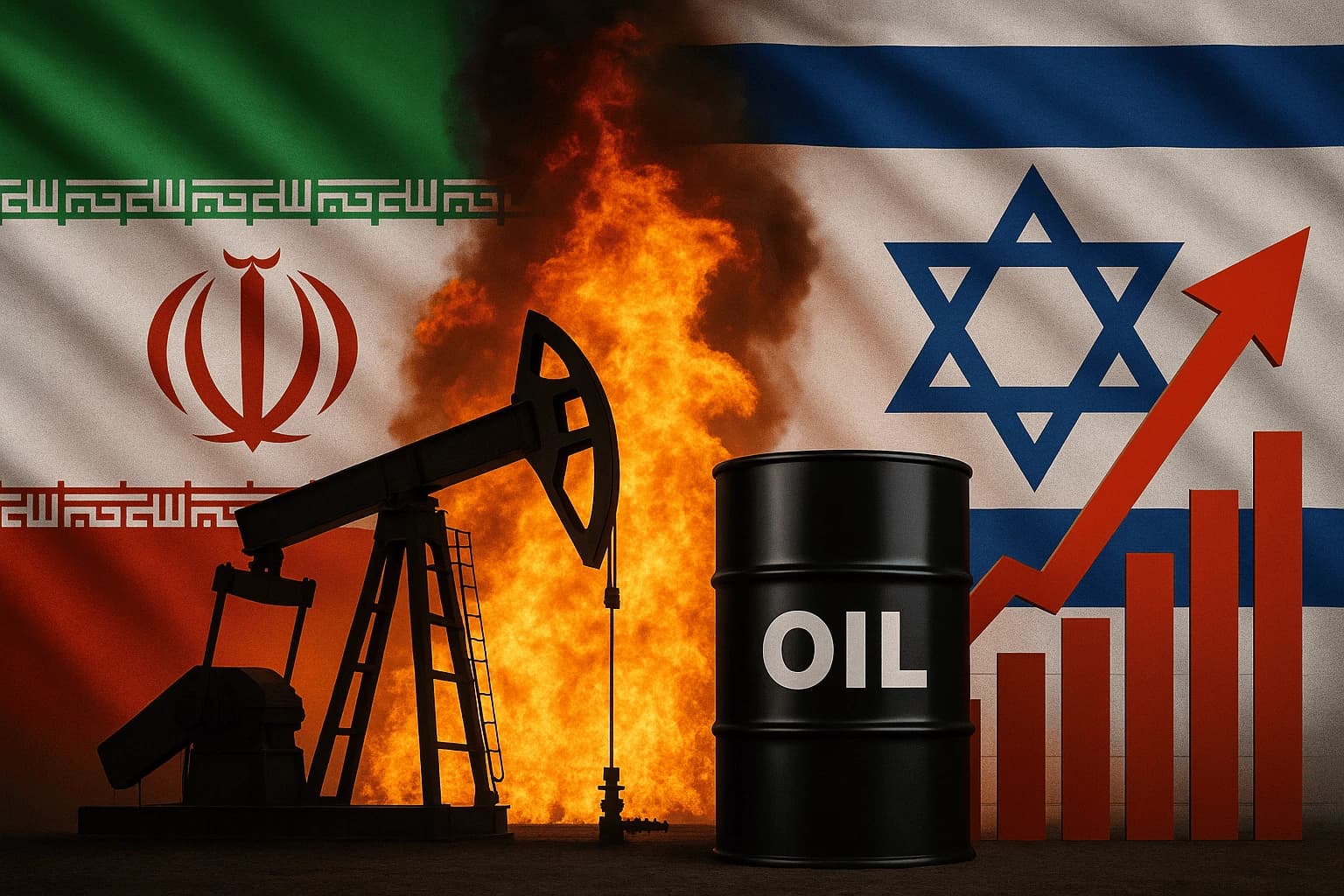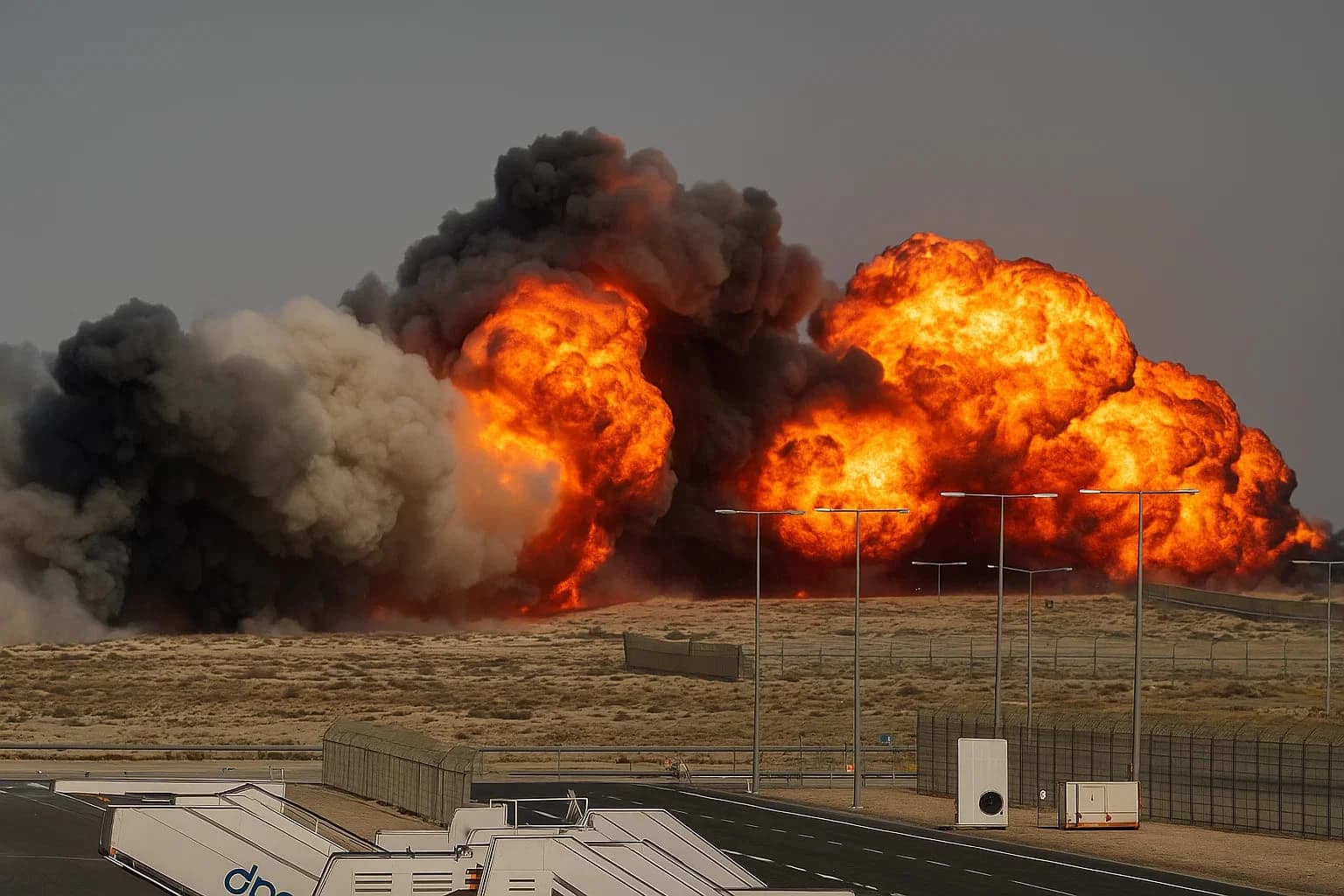© 2025 Roz UpdatesbyTETRA SEVEN

* All product/brand names, logos, and trademarks are property of their respective owners.
In 2025, the world is once again grappling with the profound economic and geopolitical consequences of conflict in the Middle East. The escalating Iran Israel war is not just a regional matter—it is a global crisis with far-reaching implications, especially for the energy sector. As tensions boil over into direct military confrontations, global oil markets have reacted with volatility, uncertainty, and record-high price spikes.
At the heart of this disruption lies the strategic and vulnerable Strait of Hormuz, through which approximately 20% of the world’s oil supply flows. Iran’s veiled threats to obstruct this critical maritime chokepoint—and Israel’s military response to perceived threats—have sent shockwaves through commodity exchanges from New York to Tokyo. Brent crude and West Texas Intermediate (WTI) have surged past levels unseen since the 2008 financial crisis, causing alarm among governments and investors alike.
The situation is exacerbated by speculative trading, insurance surcharges on oil tankers, and the potential for sabotage or cyberattacks on oil infrastructure. As oil becomes more expensive to ship and insure, global supply chains are tightening. Countries heavily reliant on imports, particularly in Asia, are facing fuel shortages and inflationary pressures. For economies like Pakistan, India, and Bangladesh, this conflict has translated into fuel price hikes, power outages, and increased transport costs, compounding post-pandemic recovery efforts.
Beyond the immediate economic impact, this conflict is also reshaping international diplomacy and energy policies. OPEC+ is under pressure to respond strategically without inflaming the situation further. Meanwhile, world powers are scrambling to mediate, fearing that prolonged instability could spark a broader regional war—or worse, a global confrontation.
In this blog, we explore how the Iran-Israel war is fueling a historic surge in oil prices, analyze the mechanics behind this market turmoil, and consider what lies ahead for global energy stability.
The Iran-Israel war has ignited a chain reaction in the global oil supply network, driven primarily by strategic threats and physical disruptions in the world’s most vital energy corridor. The Strait of Hormuz, located between the Persian Gulf and the Gulf of Oman, is the epicenter of this crisis. Responsible for transporting nearly one-fifth of the world’s oil, any threat to its security instantly reverberates across global energy markets.
Iran has long used the Strait as both an economic artery and a geopolitical pressure point. With hostilities escalating, Iranian naval forces have conducted aggressive patrols, issued direct threats to block tanker traffic, and reportedly mined parts of the waterway. In retaliation, Israel has intensified airstrikes on Iran’s military infrastructure, raising fears of full-blown regional war. The mere possibility of restricted passage through the Strait of Hormuz has led to a risk premium on every barrel of oil transported through the Gulf, driving prices higher.
Beyond maritime threats, Iran’s own oil exports have suffered due to the conflict. Sanctions, internal disruptions, and fear of secondary strikes have caused production slowdowns and export bottlenecks. Oil tankers are either rerouting—incurring additional time and costs—or halting operations due to escalating insurance premiums. This squeeze on supply is not just theoretical: real barrels are being delayed or lost, directly contributing to the oil price surge seen in early 2025.
Moreover, the conflict is disrupting regional cooperation among oil-producing nations. Coordinated OPEC+ output strategies are under strain as countries respond to national interests amid the chaos. Iraq and the UAE have expressed concern over pipeline vulnerabilities, while Saudi Arabia remains tight-lipped, focusing on internal security.
The fallout is clear—global oil supply is no longer just about barrels in reserves, but the ability to deliver them safely. With the Iran-Israel conflict threatening that capability, supply-side fears are becoming the dominant force in the global energy narrative.
The direct fallout of the Iran-Israel conflict is most visible in the skyrocketing price of crude oil, with both Brent and West Texas Intermediate (WTI) reaching levels not seen in over a decade. As the war escalated, markets reacted immediately—reflecting fears of a supply crunch and the breakdown of regional energy flows.
Within days of Israel’s strikes on Iranian military sites, Brent crude soared past $120 per barrel, while WTI breached the $115 mark. These spikes are driven not only by disrupted supply routes but also by increased speculative trading. Traders anticipate further instability and are locking in higher prices, creating a feedback loop of inflation.
Hedge funds and institutional investors have aggressively moved capital into oil futures, amplifying volatility. Meanwhile, governments are tapping into strategic reserves, but with limited long-term effect.
The oil price surge is disproportionately affecting fuel-importing nations, particularly in Asia. Countries like Pakistan, India, Bangladesh, and Sri Lanka are facing steep increases in petrol and diesel costs. The result: rising inflation, transport cost hikes, and greater economic pressure on lower-income populations.
In Pakistan, the average fuel price jumped by 30% in a matter of weeks, forcing public transport fares and commodity prices upward. This has placed intense pressure on fiscal policies already strained by post-pandemic debt.
OPEC+ has adopted a cautious tone, promising to monitor the situation without committing to major output increases. Saudi Arabia, wary of worsening regional conflict, has not made public production shifts. The U.S. has urged domestic producers to ramp up drilling, but logistical constraints persist.
On the other side, importers are scrambling to diversify sources—looking to Africa, the Americas, and even reviving interest in alternative fuels. But in the short term, the price surge appears to be sustained, with no diplomatic resolution in sight.
The Iran-Israel war has underscored a brutal truth: in a hyper-connected global economy, regional conflicts can ignite worldwide crises in mere days. What began as a military confrontation between two long-standing adversaries has morphed into a full-blown energy shock, pushing global oil prices to new heights and testing the resilience of nations far removed from the battlefield.
This conflict has disrupted Iran’s oil output, threatened the closure of the Strait of Hormuz, and shaken investor confidence. As a result, Brent and WTI crude have surged, triggering inflation spikes, fiscal strain in oil-importing nations, and growing political pressure on global leaders. From supply chain bottlenecks to surging consumer costs, the ripple effects are undeniable and far-reaching.
More critically, this crisis is exposing vulnerabilities in global energy systems. Overreliance on oil from conflict-prone regions has amplified the urgency for diversification—both in supply sources and energy technologies. Countries will need to rethink strategic reserves, strengthen regional partnerships, and accelerate investment in renewables to shield themselves from similar disruptions in the future.
If history is any guide, this won’t be the last oil shock triggered by Middle Eastern volatility. But how the world responds today—diplomatically, economically, and strategically—may determine whether we face another spike or start building toward true energy resilience.

22 November 2025

18 November 2025
No comments yet. Be the first to comment!